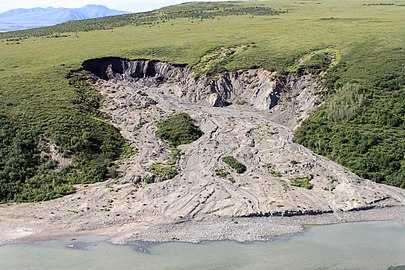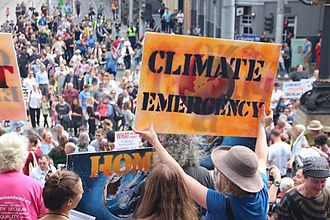Planet Earth came into existence billions of years ago. Ever since, it has undergone drastic changes over time. The change in the climatic conditions over millions of years has led us to such a beautiful planet filled with mountains, rivers, grassland oceans, and many more eye-captivating landscapes. Mother nature also provides us with an abundance of resources.
Historically, climate change has been a part of the Earth’s natural cycles. However, currently, Due to which the diverse flora and fauna of this planet are facing many problems. And one of the major issues that we are facing today is climate emergency that is global warming. We all have studied about it earlier or read news and reports regarding its effects causes and solutions but the steps are taken for the same is hardly seen. Already in the past, we have shown a lot of negligence regarding this major issue, due to which the challenges are increasing day by day, and many parts of the world are confronting natural calamities and several hardships associated with them.
What is global warming?
The increase in the earth’s temperature is called global warming. The annual global temperature is increased gradually since the industrial revolution and robust measures are required to be taken. So as to create more influence, the term climate crisis or emergency is used. A study has shown, that the term does create a more strong emotional impact, and invokes responses, as it conveys a sense of hardship. And in this stressful situation, there’s much need for stronger steps to be taken and implemented. Hence to understand the intensity of the problem the term climate emergency has been used to urge impactful steps and attention of the political will, which has hardly been drawn previously.

Causes of Global Warming
The main thing that causes this climate emergency is the emission of greenhouse gases. Various human activities release gases like carbon dioxide, methane, nitrous oxide, water vapor, and chlorofluorocarbon (CFCs) in the atmosphere, which absorbs the sunlight and solar radiations that must have bounced back into
space, but get trapped by these gases, hence increasing the atmospheric temperature and causing increment in the global temperature. The major side effects of this climate crisis are ozone layer depletion, extreme weather conditions like hot heat waves, more frequent droughts, rising ocean level, etc.

‘
Effects of climate emergency
The global impact of this crisis is being faced everywhere. The global annual temperature has increased in total by a little more than 1°C or about 2°F since the industrial revolution. Most human activities rely upon these natural resources. Cars flights and industries work burning fossil fuels and The burning of fossil fuels emits the maximum amount of greenhouse gases. Thus increasing the global temperature results in hotter summers and heat waves causing increment in heat-related illness. Due to an increase in the temperature the water reservoir dries up fast, leading to droughts and the expansion of desserts. Many parts of the world are going through this hardship where they don’t even get water regularly to meet their needs. Drying up of these water reservoirs results in poor crop production and a decline in grasslands thus increasing poverty, hunger, and mortality of humans and animals. In forest areas wildfire starts and expands easily due to raised temperature, leading to abundant loss of species in habitat. Whereas in warm climatic conditions storms absorb more heat energy from the air and become faster converting into violent hurricanes.
Some Examples include:-
As 2020 has been recorded as the hottest year, the consequences of it has been seen in different parts of the world. Russia California and Uttrakhand suffered from uncontrollable forest fires during this year. Also, the Atlantic hurricane season included the record-breaking 30 tropicals, 6 major hurricanes, and 13 hurricanes altogether. The heating up of the earth is also causing a rise in ocean level due to which coastal communities are in danger. Since 1995, the Great Barrier Reef in Australia has already lost half of its corals. As the ocean also absorbs carbon dioxide which makes it acidic, endangering marine life. These climate change-associated disasters took place all over the world, Droughts let the highest number of death in Africa. South America suffered 50% off the deaths due to floods whereas Europe suffered from heat waves from 2003 to 2010.
Steps to be taken:-
This major issue needs stronger steps to be implemented. These have to be spearheaded by governments and the businesses. We also have to take measures as an individual. Everyone needs to reduce their carbon footprint. There is also a need to replace fossil fuels with renewable resources. Industries should use hydroelectric power or windmills to run their factories. The manufacturing of electric vehicles should be increased, and their use should be promoted. Governments should promote using solar panels and water harvesting systems to reduce the carbon footprint of individuals. In December 2015, a summit took place called the Parise climate agreement, it is a step to re-imagine a fossil-free future for our planet. The Paris Agreement’s long-term temperature goal is to keep the rise in mean global temperature to well below 2 °C (3.6 °F) above pre-industrial levels, and preferably limit the increase to 1.5°C (2.7 °F), recognizing that this would substantially reduce the effects of climate change. Now in 2021, the UK government organized a World summit COP26 to reduce carbon emission till 2030.
Actions needs to follow Words
Although summits are being organized, work at the ground-level work is still missing. Many countries have taken pledges to become carbon neutral but it’s easier said than done. As the economy of many developing countries, such as India and China, depend heavily on oil and coal, it’s very difficult for them to totally cut down their carbon emissions. Moreover, Prime Minister Narendra Modi has set a target of net-zero greenhouse gas emissions by 2070, a significantly later deadline than many other countries. Mr. Modi also says India will reduce the emissions intensity of its economy by 45% by 2030. These pledges and summits are of no use until groundwork is done properly. The government needs to provide a solid working plan to reach its target. Without these major steps it is impossible to reach the target.
Written By- Anish Banerjee
Help us Help Them! Think Wildlife Foundation is a non profit organization with various conservation initiatives. Our most prominent campaign is our Caring for Pari intiative. Pari is a rehabilitated elephant at the Wildlife SoS Hospital. 25% of the profits from our store are donated to the elephant hospital for Pari. Other than buying our wonderful merchandise, you could donate directly to our Caring For Pari fundraiser.
